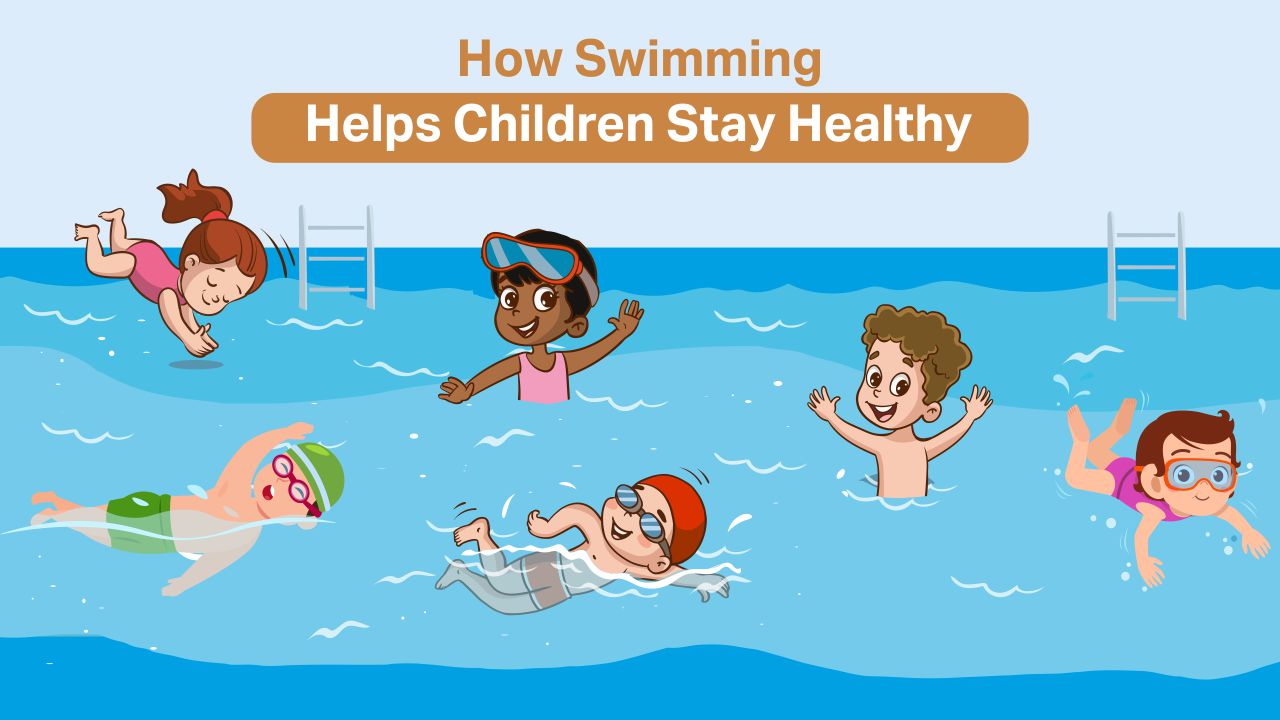Health Benefits of Swimming for Children
Swimming is often considered a fun recreational activity, but it offers far more than just enjoyment. It is one of the most complete forms of exercise that contributes to overall health and well-being. Whether for adults or children, regular swimming practice provides a wide range of physical, mental, and emotional benefits.
Schools in Gurgaon, like, K.R. Mangalam World School, are increasingly focusing on swimming as an essential part of their extracurricular and physical education programmes. This article explores the many advantages of swimming, especially the benefits of swimming for children’s health, and highlights why some of the best schools in Gurgaon are adopting swimming activities.
Why is Swimming Considered a Full-Body Workout?
Swimming engages almost all major muscle groups in the body. Unlike many other forms of exercise that may focus primarily on specific areas, swimming requires the coordinated effort of arms, legs, back, and core. As children propel themselves through water, their muscles work in unison, helping to improve strength, flexibility, and endurance.
Moreover, swimming is low-impact, which makes it an ideal activity for individuals of all ages, including young children and the elderly. The buoyant nature of water reduces stress on joints, making swimming particularly suitable for children whose bones and muscles are still developing. This low-impact aspect also means a lower risk of injury compared to high-impact sports like running or basketball.
Physical Benefits of Swimming
Here are a few physical benefits of swimming:
Improves Cardiovascular Health
Swimming is excellent for the heart and lungs. It promotes efficient circulation and improves respiratory capacity by increasing lung strength. Regular swimmers tend to have lower blood pressure and reduced risk of cardiovascular diseases later in life.
Enhances Muscle Strength and Tone
Children who swim regularly develop stronger muscles and better overall body tone. The resistance of water provides natural strength training that helps build endurance without the need for weights or complicated machinery.
Boosts Flexibility
The various strokes involved in swimming, such as freestyle, breaststroke, and backstroke, require stretching and coordinated body movement. This naturally enhances flexibility in joints and muscles over time.
Supports Healthy Weight Management
Swimming burns a significant number of calories, which helps children and adults maintain a healthy weight. For growing children, it encourages physical fitness without promoting unhealthy weight loss practices.
Mental and Emotional Benefits of Swimming
Swimming also affects your mental and emotional well-being. Here’s how:
Reduces Stress and Anxiety
Being immersed in water can have a calming effect. Swimming stimulates the release of endorphins, which help reduce stress and improve mood. Children often feel more relaxed and confident after swimming sessions.
Improves Cognitive Skills
Studies have shown that regular physical exercise, including swimming, is linked to improved concentration and academic performance in children. The structured learning of swimming techniques also helps improve memory and discipline.
Boosts Confidence and Social Skills
Swimming classes often take place in group settings, which helps children build social skills and interact with peers. Learning to swim and improving in the sport provides a sense of achievement, which boosts self-confidence.
The Benefits of Swimming for Children’s Health
Children benefit in specific ways from swimming that go beyond general physical fitness. Their bodies and minds are still developing, so the advantages of regular swimming practice are especially significant.
Improves Lung Capacity and Breathing Patterns
Swimming requires controlled breathing, which helps children develop proper breathing techniques. This not only improves lung capacity but also helps prevent respiratory issues in the long run.
Strengthens Core Stability
Maintaining balance in water requires the use of core muscles. This leads to better posture and stability, which is important for children’s overall physical development.
Enhances Coordination and Motor Skills
Swimming requires the coordinated movement of arms and legs, combined with rhythmic breathing. This improves fine and gross motor skills, which are crucial for children as they grow.
Provides Safety Skills
Learning to swim is not just about fitness; it is a critical life skill. Children who know how to swim are less likely to suffer from drowning incidents, and they gain the confidence to handle themselves safely in water bodies.
How Do Schools Help?
Gurgaon is home to some of the top schools in India, like K.R. Mangalam World School, many of which have adopted swimming as part of their curriculum. Schools in Gurgaon, like K.R. Mangalam World School understand the importance of a balanced education that promotes both academics and physical development. Some of the best CBSE schools in Gurgaon now offer well-structured swimming programmes with professional instructors, safe pool facilities, and organised classes.
These schools have realised that integrating swimming into regular school activities has several benefits:
- It contributes to holistic development.
- It offers students a productive way to spend their time after school hours.
- It fosters discipline and routine.
- It promotes health and wellness, reducing future medical concerns.
Conclusion
Swimming stands out as one of the most beneficial physical activities for children and adults alike. It strengthens the body, sharpens the mind, and instills discipline. The growing emphasis on swimming programmes by schools in Gurgaon, like K.R. Mangalam World School, reflects the increasing awareness of its importance. For children, swimming is not just a sport but a life skill that enhances health, confidence, and safety.
Parents looking for the best schools in Gurgaon should consider schools that integrate swimming into their regular curriculum. A well-rounded education that includes physical fitness components such as swimming prepares children for a healthier and more balanced life.
Frequently Asked Questions
What is the fee structure of the K.R. Mangalam World School?
You can access the fee structure of the school here.
Is K.R. Mangalam World School, Gurgaon, a top school?
Yes, the school is ranked No.1 in Gurugram Leaders Category By Times School Survey 2024.
What is the student-teacher ratio at the school?
For effective curriculum implementation, the school maintains the following student-teacher ratio:
- 15:1 for Nursery to UKG
- 30:1 for Class I to Class XII
What is the teaching methodology / approach followed by the school?
K.R. Mangalam World School, Gurgaon, follows an innovative and student-centric teaching methodology that aligns with the National Education Policy (NEP) 2020.





